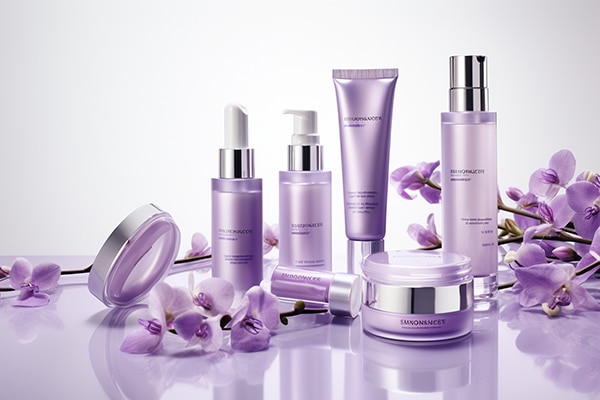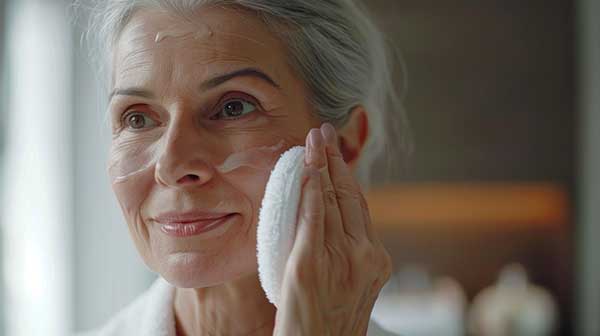Best Facial Cleansing Routine For Women With Dry Skin
Dealing with dry skin can feel like an endless battle. You might wake up to tightness, flakiness, and irritation that just won’t go away. As a woman navigating the world of skincare, finding the right routine is crucial for keeping your skin hydrated and healthy. A proper facial cleansing routine tailored specifically for dry skin can make all the difference in achieving that radiant glow you desire.
In this guide, we’ll explore effective techniques and products designed to help you cleanse without stripping away essential moisture. Whether you’re new to skincare or looking to refine your current approach, we’ve got tips that will empower you on your journey toward softer, smoother skin. Let’s dive in!
Understanding Dry Skin and Its Causes
Dry skin, or xerosis, is a common condition that affects many women. It occurs when the skin loses its natural moisture and becomes rough, flaky, and often itchy.
Several factors contribute to dry skin. Environmental elements like cold weather, low humidity levels, and harsh winds can strip away essential oils. Additionally, hot showers may feel soothing but can actually worsen dryness by removing crucial lipids from the skin barrier.
Certain lifestyle choices also play a role. Overwashing your face or using products with alcohol can lead to dehydration. Moreover, underlying health issues such as eczema or psoriasis may manifest as dry patches on the skin.
Understanding these causes is vital for developing an effective cleansing routine tailored specifically for your needs. By identifying what triggers your dryness, you’re one step closer to achieving healthier-looking skin.
The Importance of a Proper Facial Cleansing Routine for Dry Skin
A proper facial cleansing routine is vital for women with dry skin. It sets the foundation for any skincare regimen. Without it, dryness can worsen and lead to irritation.
When your skin lacks moisture, impurities tend to cling more stubbornly. A thoughtful cleanse removes dirt without stripping natural oils. This balance is crucial in maintaining hydration levels.
Cleansing also prepares your skin for subsequent products like serums and moisturizers. If your face isn’t clean, these products may not penetrate effectively, reducing their benefits.
Moreover, a good cleansing routine can boost cell turnover. This helps reveal fresher skin beneath the surface while minimizing flakiness and dullness.
Investing time in this essential step means nurturing your complexion daily. Consistency will ultimately yield a smoother texture and healthier glow over time.
Choosing the Right Cleanser for Your Skin Type
Selecting the right cleanser is crucial for women with dry skin. Look for products specifically labeled as hydrating or moisturizing. These cleansers often contain ingredients like glycerin and hyaluronic acid, which help retain moisture.
Avoid harsh soaps that strip the skin of its natural oils. Instead, opt for cream-based or oil-based cleansers that nourish while they cleanse. Gel formulations may feel refreshing but can exacerbate dryness.
Consider fragrance-free options to reduce irritation. Fragrance can be a hidden enemy in skincare, especially for sensitive skin types.
Always patch-test new products on a small area before applying them to your entire face. This simple step can prevent potential adverse reactions and ensure compatibility with your unique skin needs.
Remember that some cleansers work best when used at specific times—like gentle exfoliating washes twice a week—to enhance your daily routine without compromising hydration.
Step-by-Step Guide to a Effective Facial Cleansing Routine for Dry Skin
Start your cleansing routine by washing your hands thoroughly. Clean hands prevent transferring bacteria to your face.
Next, dampen your skin with lukewarm water. Avoid hot water as it can strip away natural oils and worsen dryness.
Apply a gentle cleanser suited for dry skin. Creamy or hydrating formulas work best. Massage the product onto your face in circular motions for about 30 seconds to ensure thorough coverage.
Rinse off the cleanser with lukewarm water, making sure no residue is left behind. Pat your face dry with a soft towel; don’t rub harshly.
Follow up immediately with a hydrating toner or essence to lock in moisture. This step is crucial for maintaining hydration levels throughout the day.
Apply a rich moisturizer while your skin is still slightly damp to seal in that extra moisture. Enjoy the feeling of clean, hydrated skin!
Additional Tips for Maintaining Moisture in Your Skin
Hydration is key for dry skin. Drinking plenty of water throughout the day helps maintain moisture levels from within. Aim for at least eight glasses to keep your skin plump and glowing.
Consider using a humidifier, especially during winter months. This adds moisture back into the air, preventing your skin from drying out further.
Incorporate hydrating ingredients in your skincare routine. Look for products containing hyaluronic acid or glycerin, which attract and hold water in the skin.
Don’t forget about diet! Foods rich in omega-3 fatty acids like salmon and walnuts can improve your skin’s barrier function, locking in essential moisture.
Always apply moisturizer on damp skin. This technique traps hydration effectively and enhances overall softness. Your daily habits play a significant role in maintaining that coveted glow.
Common Mistakes to Avoid in Your Skincare Routine
Many women with dry skin unknowingly make common mistakes that can worsen their condition. One frequent error is using harsh cleansers. These products strip away natural oils, leaving the skin even drier.
Another mistake is over-exfoliating. While exfoliation helps remove dead skin cells, too much can lead to irritation and increased dryness. It’s best to limit this process to once or twice a week.
Skipping moisturizer after cleansing also poses problems. Even if your face feels clean, it needs hydration immediately post-wash to maintain moisture levels.
Ignoring sun protection is a critical oversight. UV rays can damage dry skin further, so applying sunscreen daily is essential for keeping your complexion healthy and protected from environmental stressors.
By avoiding these pitfalls, you’ll be on the right path towards healthier-looking skin without compromising its delicate balance.
Conclusion: Achieving Healthy, Hydrated Skin with the Right Cleansing Routine
Achieving healthy, hydrated skin is entirely possible with the right facial cleansing routine tailored for women with dry skin. By understanding the unique needs of your skin and selecting appropriate products, you can nourish and protect it effectively.
Implementing a step-by-step guide to cleansing will not only remove impurities but also enhance moisture retention. Remember to choose gentle cleansers that hydrate rather than strip away natural oils.
Incorporating additional tips like using humidifiers or opting for hydrating masks can further boost your skincare efforts. Avoid common mistakes such as over-cleansing or skipping moisturizer after washing your face, as these can exacerbate dryness.
With dedication to this best facial cleansing routine, you’ll see significant improvements in the texture and appearance of your skin. Enjoy every moment spent caring for yourself; it’s more than just a routine—it’s an investment in your well-being. Healthy, glowing skin is within reach when you prioritize proper care tailored specifically for dry conditions.
- About the Author
- Latest Posts
Johnnie D. Jackow Sr., the founder and CEO of Total Body Fitness, Worldwide, has a long-standing career in the fitness industry. He began as a certified personal trainer in the mid-90s and soon after authored his first weight loss book in 1998. This led to the launch of Total Body Fitness, Nationwide in the USA at the same time. Johnnie gained recognition as the fitness guru of his time, running infomercials on local TV late at night in Houston, Texas. Over the years, he has helped more than 40,000 individuals from all over the world achieve their health and fitness goals. With over 60,000 hours of documented training in integrative functional medicine, he completed his PhD in human physiology in 2010. His primary objective is to assist people in reaching their health and fitness goals through alternative approaches rather than relying solely on conventional medicine and pharmaceutical drugs. Today, with almost three decades of experience under his belt, Johnnie continues to be a leader in health and fitness.







